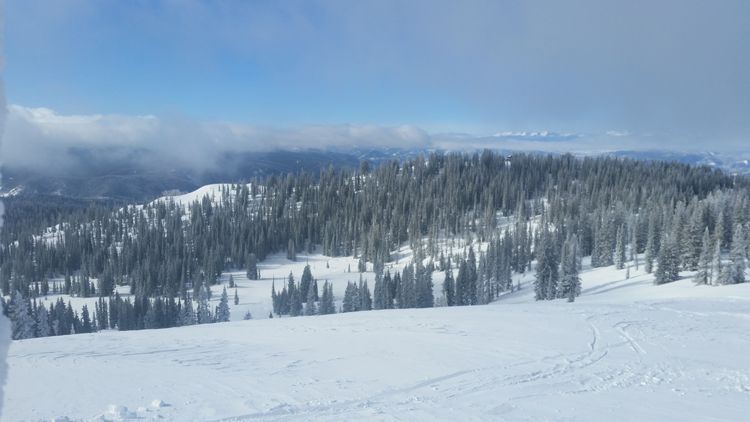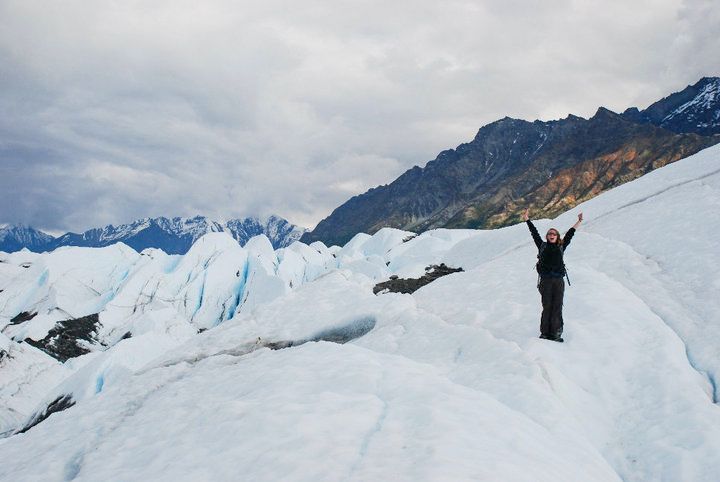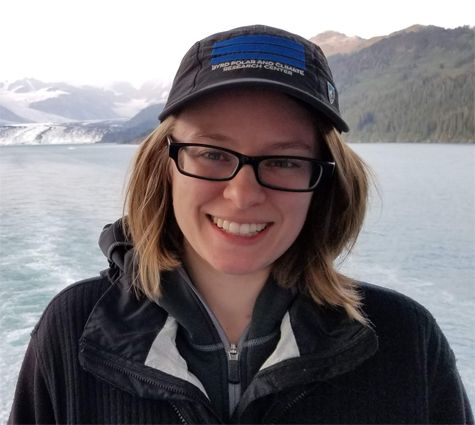Early Career Scientist Spotlight
Dr. Melissa Wrzesien (she/her/hers)
Hydrologist
Hydrological Sciences Laboratory (617)
What is your research focus?
My research focuses on improving our understanding of seasonal snow. Snow accumulation and melt are important components of the water cycle, but there isn’t currently a great way to observe snow mass over large regions. While some satellites can observe snow water equivalent (the amount of water in the snow if it all melted) from space, the existing sensors tend to have coarse spatial resolution and high uncertainty, particularly in forests and areas with deep snowpacks. Therefore, I use land surface models and data assimilation to study snow mass and snow melt on regional to continental scales.
Specifically, I use the NASA Land Information System (LIS), which is a modeling framework that provides users a selection of land surface models, meteorological forcing datasets, and satellite observations. Much of my recent research involves working toward a future snow satellite mission. I’ve worked to implement new developments in LIS, like the snow process model SnowModel, with the aim of creating a model framework for assimilating future snow observations. I consider how observations from proposed sensors may improve snow estimation in a variety of landscapes through synthetic experiments where I assimilate model-generated “observations” of snow mass with LIS. In one current project, I have been running assimilation experiments to understand how frequent snow observations need to be for constraining model estimates to a specified uncertainty level. This project can help answer the question of how many spaceborne or airborne observations are needed throughout the winter and spring to ensure accurate predictions of peak snow and snowmelt runoff. Each project makes incremental advances in our ability to estimate snow resources and improves the modeling ecosystem for assimilation of any potential new snow satellite observations.

Credit: Melissa Wrzesien
Did you always know that you wanted to study hydrology?
When I was an undergraduate, I participated in a university-sponsored trip to Alaska where we learned about and saw the impacts of climate change firsthand through fieldtrips to glaciers, the Arctic Circle, and wildfire-burned areas. From that trip, I knew I was interested in studying something climate related. I did undergraduate research with a lab that used regional climate models to study mountain snow in the Sierra Nevada of California. Between those two experiences, I became very interested in studying snow through the lens of climate change, and since I enjoyed coding, I was excited to learn more about regional modeling. My PhD then provided me the opportunity to dig deeper into learning about land surface modeling and snow hydrology.
What research accomplishment are you most proud of?
During my postdoc, I worked with an interdisciplinary team to study how climate change may impact snow accumulation and snowmelt runoff in California over the twenty-first century. I led the modeling efforts for downscaling global climate model projections to a finer spatial resolution more suitable for a regional study. The regional projections were then shared with our team to understand the “downstream” impacts that could result from the changes in snow mass, such as how reservoir operations and electricity generation may need to adapt to changes in magnitude or timing of snow melt. Prior to that project, I hadn’t had the opportunity to tie my hydrology research to societal impacts, and it was a great experience working with such a diverse team in terms of expertise.

Credit: Scott Barnes
What is an interesting problem or hurdle that you’ve overcome in your work?
Several of my current projects require computationally expensive model simulations, where we’re pushing the boundary of what has previously been done on our team. Snow mass generally varies with elevation, vegetation type, forest density, slope, aspect, among other variables, so accurate and realistic estimates require relatively fine spatial resolution to capture the heterogeneity of snow characteristics. Further, I’ve been involved in several projects that consider the water budget on the continental or hemispherical scale. Combining fine spatial resolution with large geographical domains can result in memory-intensive simulations, which have sometimes been beyond what our current model framework is designed for. It’s been a fun challenge to make model updates that allow for such advancements. I also want to mention that none of this work would be possible without the NASA Center for Climate Simulation (NCCS), where I run my model simulations. They’ve been instrumental to my projects and for helping me and my colleagues push towards improved estimates of the water cycle.
What aspect of your work are you most passionate about?
I have greatly enjoyed every mentoring opportunity that has come my way. Most recently, I worked with MAIANSE (the Minority University Research and Education Project (MUREP) American Indian Alaska Native STEM Engagement) to mentor an undergraduate student at the University of Alaska. It was a lot of fun to teach her about my work and to learn about the internship project she designed.
Where do you see yourself in the near future?
I’ve really enjoyed my time at NASA Goddard and in the Hydrological Sciences Lab, so hopefully I’ll continue to work here on exciting projects and with great team members! I’ve been working on the Earth Information System (EIS) team since the pilot phase in 2021. EIS is an interdisciplinary group that aims to combine NASA’s satellite, modeling, and data fusion capabilities to study different aspects of the earth system in an open science framework. In the near-term future, I’m excited to continue working with my colleagues, to see how the EIS thematic areas collaborate with each other on the individual projects, and to keep growing my skillset for supporting open science.
Biography
Home Town:
Raleigh, NC
Undergraduate Degree:
B.S. in Environmental Science and Applied Mathematics, University of North Carolina, Chapel Hill
Post-graduate Degrees:
Ph.D. in Earth Sciences, Ohio State University, Columbus

Link to Dr. Wrzesein's GSFC Bio
